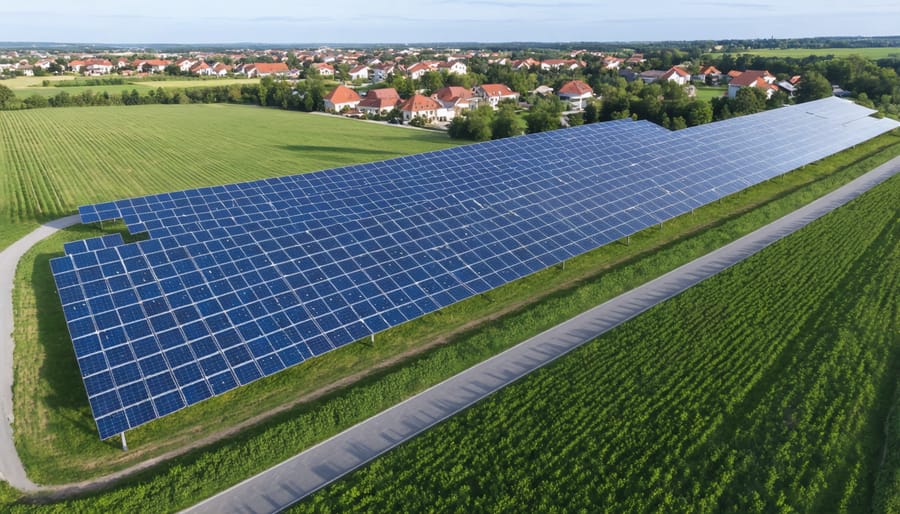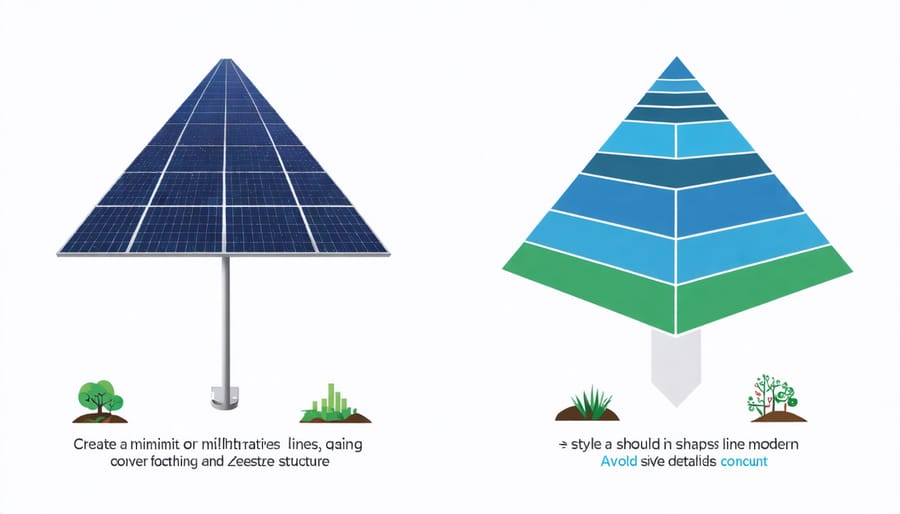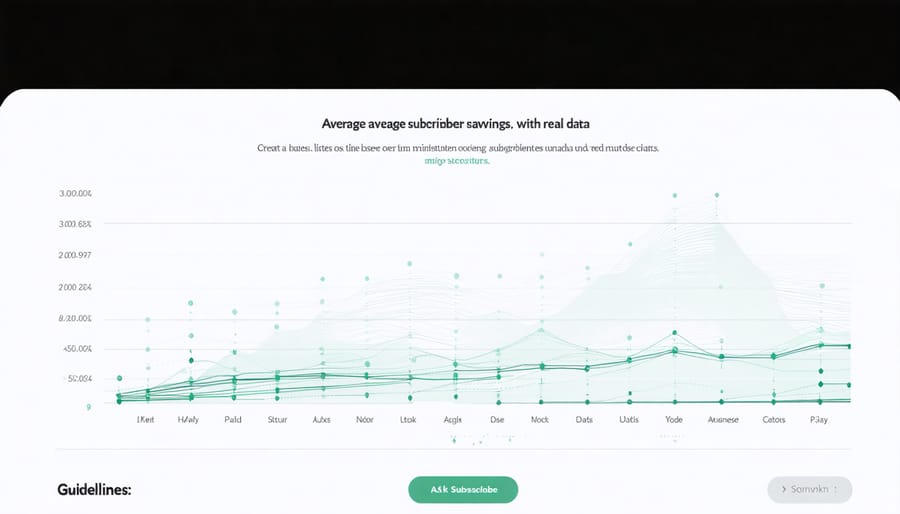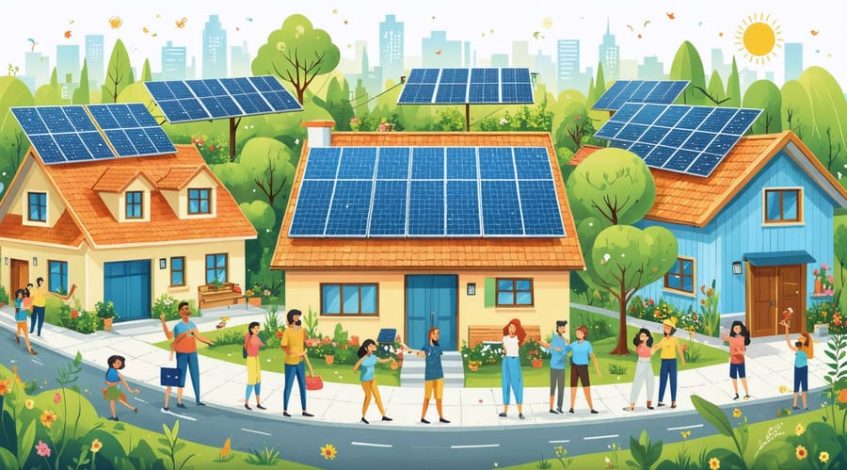Community solar programs, unlike pyramid schemes, operate on fundamentally different principles that are transforming local economies through legitimate renewable energy investments. While skepticism about new financial models is healthy, community solar follows a straightforward business structure: participants subscribe to a portion of a solar array’s output, receive direct energy credits on their utility bills, and benefit from reduced electricity costs without any requirement to recruit other members.
The confusion often stems from the subscription-based model and the presence of multiple stakeholders. However, community solar projects are regulated by state utilities commissions, backed by tangible assets (solar panels and infrastructure), and generate verifiable electricity that flows directly into the power grid. Unlike pyramid schemes, which rely on unsustainable recruitment chains and lack genuine products or services, community solar delivers measurable value through renewable energy generation and documented cost savings.
Let’s examine the key differences between legitimate community solar programs and deceptive pyramid schemes to help you make an informed decision about participating in local renewable energy initiatives.
Understanding Community Solar: The Basics

How Community Solar Actually Works
Community solar operates through a straightforward subscription-based model that benefits both developers and participants. A solar developer constructs and maintains a large-scale solar installation, typically on unused land or commercial rooftops. This installation feeds clean energy directly into the local power grid.
Subscribers, who may be homeowners, businesses, or organizations, reserve a portion of the solar farm’s production capacity. They receive credits on their utility bills based on their share of the solar garden’s energy generation. These credits directly reduce their monthly electricity costs, typically resulting in 5-15% savings compared to standard utility rates.
The process involves no upfront installation costs or equipment maintenance responsibilities for subscribers. Instead, participants sign an agreement specifying their subscription size and duration, usually ranging from 12 to 25 years. Monthly payments are calculated based on the amount of energy their portion generates, with rates typically lower than conventional utility charges.
Local utilities play a crucial role by managing the grid connection, applying bill credits, and ensuring seamless integration of solar power into the existing infrastructure. This arrangement creates a win-win situation where developers generate revenue, subscribers save money, and communities benefit from increased renewable energy production.
Key Players and Their Roles
Community solar projects involve several key stakeholders working together to create successful renewable energy initiatives. Project developers are responsible for site selection, system design, and construction management, ensuring optimal energy generation and regulatory compliance. These developers often partner with financial institutions to secure funding and manage project economics.
Utility companies play a crucial role by maintaining grid connections, managing power distribution, and administering billing credits to subscribers. They work closely with developers to ensure seamless integration of community solar facilities into existing power infrastructure.
Subscribers, including homeowners, businesses, and organizations, form the foundation of community solar programs. They receive energy credits on their utility bills based on their subscription size, without installing panels on their properties. Many programs prioritize low-to-moderate income subscribers, ensuring broader access to solar benefits.
State and federal regulators establish framework guidelines, oversee program implementation, and protect consumer interests. They set subscription requirements, determine credit allocation methods, and ensure fair pricing structures. Local governments often participate by streamlining permitting processes and supporting project development through zoning accommodations.
Community Solar vs. Pyramid Schemes: Critical Differences

Real Asset Generation
Unlike pyramid schemes that lack tangible assets, community solar projects generate real, measurable value through physical solar infrastructure and verifiable energy production. These installations consist of actual photovoltaic panels, inverters, and related equipment that produce electricity measurable in kilowatt-hours (kWh).
Each community solar farm typically generates hundreds of thousands to millions of kWh annually, which is distributed to the power grid and tracked through sophisticated monitoring systems. This energy production creates concrete value in two ways: direct electricity generation and renewable energy credits (RECs). The electricity is sold to utilities at established rates, while RECs provide additional revenue streams through environmental attribute markets.
For example, a typical 2-megawatt community solar installation can power approximately 400-600 homes annually while generating consistent returns for participants through energy credits. These credits represent actual cost savings on electricity bills, not theoretical or promised returns dependent on recruiting new members.
The physical assets are typically backed by long-term power purchase agreements (PPAs) with utilities, providing stable, predictable revenue streams. Additionally, these installations often have 25-30 year operational lifespans with warranties and insurance coverage, ensuring long-term value generation for participants. This tangible infrastructure and documented energy production fundamentally distinguish community solar from pyramid schemes, which lack real value creation mechanisms.
Regulated Industry Standards
Community solar programs operate within a robust regulatory framework designed to protect consumers and ensure program legitimacy. The Federal Trade Commission (FTC) oversees these programs at the national level, while state public utility commissions provide additional oversight and consumer protection measures.
Most states with community solar programs have enacted specific legislation that establishes clear guidelines for project development, subscription terms, and consumer rights. These regulations typically mandate transparent disclosure of all costs, benefits, and contractual obligations. Project developers must obtain proper permits, maintain compliance with utility interconnection standards, and meet strict reporting requirements.
Consumer protections include mandatory cooling-off periods, allowing subscribers to cancel their participation without penalty within a specified timeframe. Programs must also provide clear documentation of savings calculations, performance guarantees, and dispute resolution procedures. Unlike pyramid schemes, which rely on recruitment for profits, community solar generates value through actual electricity production and grid integration.
The Interstate Renewable Energy Council (IREC) has established best practices for community solar programs, which many states have adopted. These guidelines ensure fair billing practices, appropriate subscriber management, and equitable distribution of benefits. Additionally, most programs require regular audits and performance verification by independent third parties.
Project developers must maintain licenses, bonds, and insurance coverage as mandated by state regulations, providing multiple layers of financial protection for subscribers. This comprehensive regulatory framework distinguishes legitimate community solar programs from fraudulent schemes and ensures sustainable, long-term benefits for participants.
Proven Benefits of Community Solar
Financial Returns for Subscribers
Community solar subscribers typically experience significant financial benefits of solar energy through predictable monthly savings and minimal upfront costs. Analysis of multiple community solar projects across different states shows that subscribers generally save between 5-15% on their annual electricity costs.
For example, a medium-sized business in New York participating in a community solar program reported annual savings of $3,800 on their electricity bills with zero initial investment. Similarly, a manufacturing facility in Massachusetts achieved a 12% reduction in energy costs during their first year of subscription, translating to approximately $7,200 in savings.
The ROI structure is straightforward and transparent: subscribers receive credits on their utility bills based on their share of the solar farm’s production. These credits are typically valued at 90-95% of the retail electricity rate, ensuring immediate savings from day one. A typical commercial subscriber investing in a 25kW share might see returns of $2,500-$4,000 annually, depending on local utility rates and solar production.
Unlike pyramid schemes, which rely on recruiting new participants for returns, community solar generates value through actual electricity production and guaranteed utility credits. Subscribers can typically exit their agreements with reasonable notice periods, and their savings are directly tied to measurable solar energy generation.

Community and Environmental Impact
Community solar projects deliver substantial benefits that extend far beyond individual subscriber returns, making them fundamentally different from pyramid schemes. These initiatives create lasting positive impacts on both local communities and the environment. By enabling collective participation in renewable energy, community solar programs help reduce greenhouse gas emissions and decrease dependence on fossil fuels at a neighborhood scale.
The environmental advantages are quantifiable: a typical 2-megawatt community solar installation can offset approximately 2,000 tons of carbon dioxide annually – equivalent to removing 400 cars from the roads. These projects also contribute to local biodiversity by preserving green spaces and creating wildlife corridors when thoughtfully designed.
From a community perspective, these programs create local jobs, strengthen energy independence, and boost regional economic development. They often include workforce training programs and educational initiatives that build valuable skills within the community. As part of corporate social responsibility efforts, many businesses participate in community solar to demonstrate their commitment to sustainability while supporting local development.
Additionally, community solar installations can improve grid resilience, reduce transmission losses, and help utilities better manage peak demand. This infrastructure investment benefits all electricity consumers in the area, not just direct subscribers, by contributing to a more stable and efficient power distribution system.
Due Diligence: Choosing Legitimate Community Solar Projects
When evaluating community solar opportunities, conducting thorough due diligence is essential to ensure you’re participating in a legitimate program. Start by verifying the developer’s track record and solar project credibility through industry databases and regulatory compliance records.
Key verification steps include:
1. Check state regulatory compliance: Ensure the project is registered with relevant state authorities and meets local renewable energy requirements.
2. Review developer credentials: Research the developer’s history, completed projects, and financial stability. Established companies should have a portfolio of successful installations and positive customer feedback.
3. Examine contract terms: Legitimate programs offer transparent agreements with clear terms regarding:
– Subscription costs and savings calculations
– Contract duration and termination policies
– Performance guarantees
– Maintenance responsibilities
– Credit requirements
4. Verify utility partnerships: Confirm the project has established relationships with local utility companies and proper interconnection agreements.
5. Assess project timeline: Look for realistic development schedules and clear communication about project milestones.
Red flags to watch for:
– Pressure to make immediate decisions
– Unrealistic savings promises
– Lack of physical project documentation
– Absence of proper permits and approvals
– Unknown or unverifiable company history
Consider consulting with:
– Local solar industry associations
– State consumer protection offices
– Energy regulatory authorities
– Independent solar consultants
Document review should include:
– Project feasibility studies
– Environmental impact assessments
– Grid connection agreements
– Land use permits
– Equipment specifications
By following these verification steps and working with established industry partners, organizations can confidently participate in legitimate community solar projects that deliver expected benefits while avoiding potential scams.
Community solar programs represent a legitimate and regulated method of expanding access to renewable energy, distinctly different from pyramid schemes in both structure and purpose. Through our analysis, we’ve established that these programs operate under strict regulatory oversight, provide tangible benefits to participants, and maintain transparent financial models that benefit all stakeholders.
The key differentiators include verified energy production, clear contractual agreements, and measurable cost savings for subscribers. Unlike pyramid schemes, which rely on continuous recruitment and primarily benefit early participants, community solar projects generate real value through renewable energy production and equitable distribution of benefits to all members.
For business owners and facility managers considering participation, due diligence remains essential. We recommend thoroughly reviewing program terms, understanding the commitment period, and confirming the developer’s track record. Look for projects that offer flexible terms, clear savings projections, and strong customer support.
The future of community solar appears promising, with increasing state-level support and improved program structures. As the renewable energy sector continues to mature, these programs will likely play a crucial role in achieving sustainability goals while providing economic benefits to participants.
By approaching community solar opportunities with informed scrutiny rather than unfounded skepticism, organizations can confidently participate in this growing sector of the renewable energy market and contribute to a more sustainable future.

